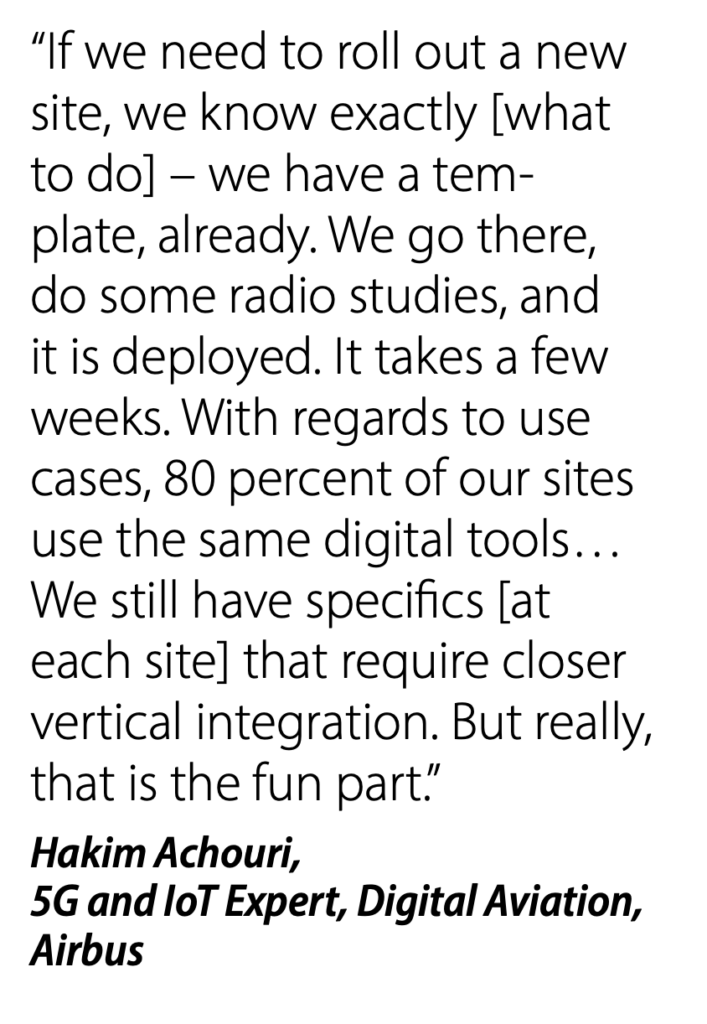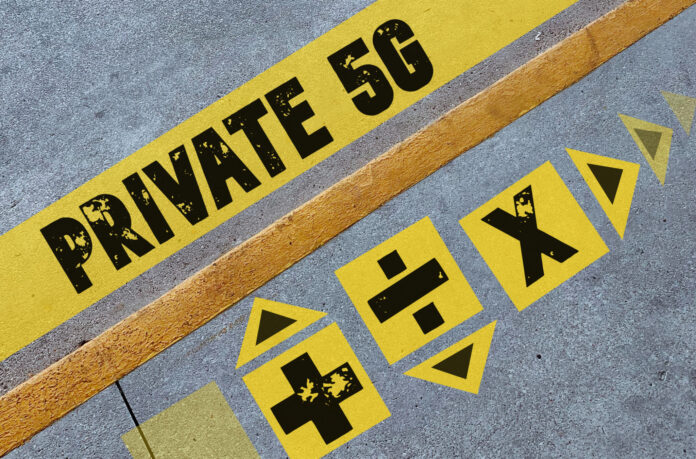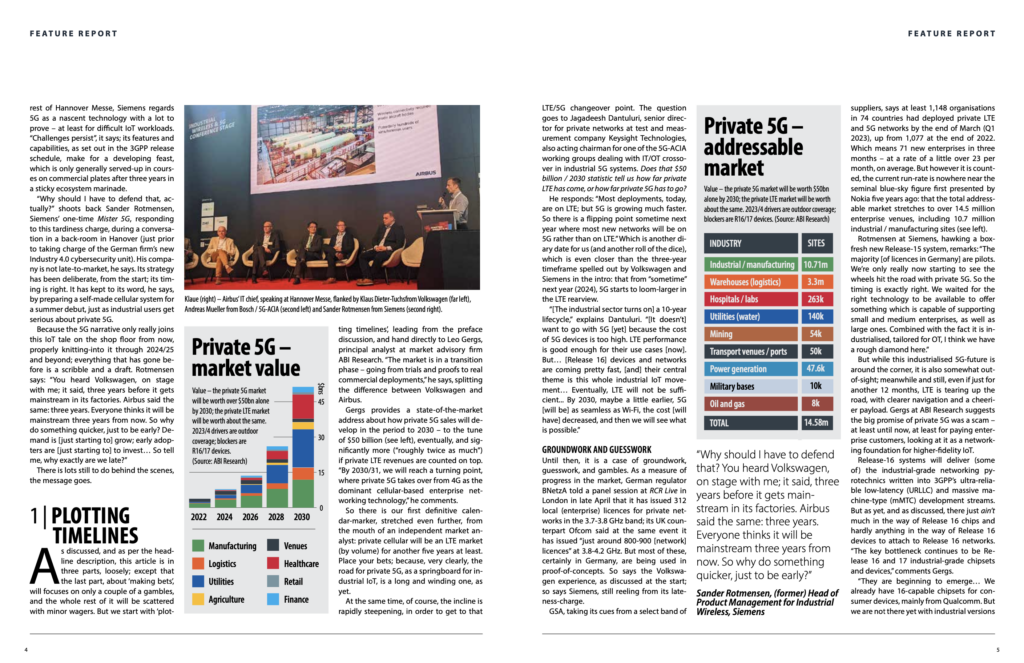Note, this article is taken from the RCR editorial report on Private 5G for IoT, published in July. The following is the first part of the foreword to the report. Go here to download the full report. It also takes and collates excerpts from various other articles that have appeared over recent months on RCR Wireless. The subject will be further explored in the upcoming Industrial 5G Forum on November 7; sign up here.
As written (twice), the truth about private 5G, certainly so far as IoT and Industry 4.0 goes, can be found somewhere between the desperate excitement of MWC and the distracted indifference of Hannover Messe. And of these twin events, which bookend the spring season and dictate the rest of the industrial tech calendar, the mood in the industrial IoT user market in 2023 invariably lies closer to the gleichgültigkeit (we had to look that up!) of the big German fair – if only because it takes a vertical focus, instead of just a horizontal one, and so the crosshairs more easily align.
Take Volkswagen, the biggest car maker in the world, and surely the ultimate bellwether for this stuff; the Wolfsburg firm told Hannover Messe in April about its feelings and findings, and suggested 5G is just another waypoint on the Industry 4.0 road – and a long way off, still. (But what else did we expect, as this article will conclude?) Flanked on a panel by Airbus, Bosch, Siemens, plus some others, Klaus Dieter-Tuchs, head of industrial networking planning at the firm, puts the spring-time MWC hullabaloo about private 5G into some kind of perspective.
“We see 5G as just another technology to access the central IT network. For us, [it] is a small part of a complete network,” he says, before listing all the problems with private 5G, as presented to the industrial IoT market today. It was in line with the message from the rest of the show: that private 5G is not a 2023 story, and maybe not even a 2024 one. It will take until 2024/25 to gain any kind of real purchase with the industrial set, to deliver digital change for certain brownfield use cases.
Volkswagen remains very much in test mode with private 5G-for-IoT, like many enterprises in Germany – which, as the original home of Industrie 4.0, might also be considered to be a geographic bellwether for hard-nosed industrial-grade 5G. The company has four different test networks with four different car marques; with Audi in Ingolstadt, Porsche in Leipzig, Volkswagen in Wolfsburg, and Skoda somewhere in the Czech Republic. Each one is from a different network vendor – which says, as much as anything, that enterprises are still weighing the odds and hedging their bets.
“We are trying different vendors to gain experience for live production networks. But we have no live networks, as yet – and we can’t say [exactly] when we will have them.” Dieter-Tuchs suggests, a little vaguely, that Volkswagen will have commercially-active networks “in the next months,” but also raises agitated concerns about user equipment, device authorisation, and network integration (discussed variously in parts two and three). The point is only to mark the calendar: in mid-to-late 2023, private 5G for IoT is a research project, largely – at least where the two disciplines cross in industrial climes.
This is reinforced by the experiences of Airbus and Siemens, speaking on the panel as well, and in conversation separately with RCR Wireless. Airbus is further along with live deployments. It has 11 networks at 11 sites, all of them deployed for IoT exercises of one kind or another. But it is expanding beyond its core manufacturing bases in France and Germany, to also deploy in Canada, China, Spain, the UK, and the US. And it is doing so with a cookie-cutter blueprint – based on the principle that what works once works every time (counter to the generalist supplier narrative that every plant is different).
Architecturally, it is fairly straightforward, declares Hakim Achouri, 5G and IoT expert for digital aviation at the firm. It takes some radio planning, but not much; two-weeks, from start to finish, with an 80/20 rule for applications on top, as well. “If we need to roll out a new site, we know exactly [what to do] – we have a template, already. We go there, do some radio studies, and it is deployed. It takes a few weeks. With regards to use cases, 80 percent of our sites use the same digital tools… We still have specifics [at each site] that require closer vertical integration. But really, that is the fun part.”
The key message, from Achouri, speaking at RCR Wireless’ flagship industrial 5G-IoT event, 5G Manufacturing Forum, at the end of last year (2022), is to be bold. Because enterprises know their business best, and because late-LTE and early-5G is good to be going on with. Which makes 5G-for-IoT sound like a no-brainer. But Airbus also acknowledges in Hanover, some months later, that it is still kicking the tires, essentially; the hard-ROI of signal coverage and predictability is plain (see part two), it says, but decisions about network management and rollout strategy are still to be made.
“We don’t know yet. At the moment, we are doing it all ourselves. But to scale worldwide, we will probably outsource the service. And it will take some years to deploy everything in all plants,” comments Jirka Klaue, from the firm’s IT department. In the end, Volkswagen and Airbus, both perceived as Industry 4.0 flag-bearers, are at opposite ends of the initial 5G-IoT adoption curve: one is stuck in an experimentation rut, effectively, and the other is in some kind of commercialisation groove. But both of them still have searching questions about 5G-for-IoT; neither have gone all-in.

Munich-based Siemens, one of the rarefied breed interested in both selling and employing 5G-IoT systems, has only just launched its own home-grown solution, and only just in its home market – for use in the local 3.7-3.8 GHz band, reserved for enterprises to run private 5G networks. It has plans – clear, but also vague – to sell outside Germany, too, starting in Brazil, where the same vertical spectrum has been allocated. It says it will follow in other markets in line with demand, raising bandwidth capabilities to meet the 3.8-4.2 GHz band, around which most of Europe is congregating.
There is an argument – put, typically, by traditional telco-native 5G vendors – to say that Siemens is late-to-market. But like Volkswagen and Airbus, and most of the rest of Hannover Messe, Siemens regards 5G as a nascent technology with a lot to prove – at least for difficult IoT workloads. “Challenges persist”, it says; its features and capabilities, as set out in the 3GPP release schedule, make for a developing feast, which is only generally served-up in courses on commercial plates after three years in a sticky ecosystem marinade.
“Why should I have to defend that, actually?” shoots back Sander Rotmensen, Siemens’ one-time Mister 5G, responding to this tardiness charge, during a conversation in a back-room in Hanover (just prior to taking charge of the German firm’s new Industry 4.0 cybersecurity unit). His company is not late-to-market, he says. Its strategy has been deliberate, from the start; its timing is right. It has kept to its word, he says, by preparing a self-made cellular system for a summer debut, just as industrial users get serious about private 5G.
Because the 5G narrative only really joins this IoT tale on the shop floor from now, properly knitting-into it through 2024/25 and beyond; everything that has gone before is a scribble and a draft. Rotmensen says: “You heard Volkswagen, on stage with me; it said, three years before it gets mainstream in its factories. Airbus said the same: three years. Everyone thinks it will be mainstream three years from now. So why do something quicker, just to be early? Demand is [just starting to] grow; early adopters are [just starting to] to invest… So tell me, why exactly are we late?”
There is lots still to do behind the scenes, the message goes.
This article is continued in the RCR editorial report on Private 5G for IoT, available to download here. The subject will be further explored in the upcoming Industrial 5G Forum on November 7; sign up here.




